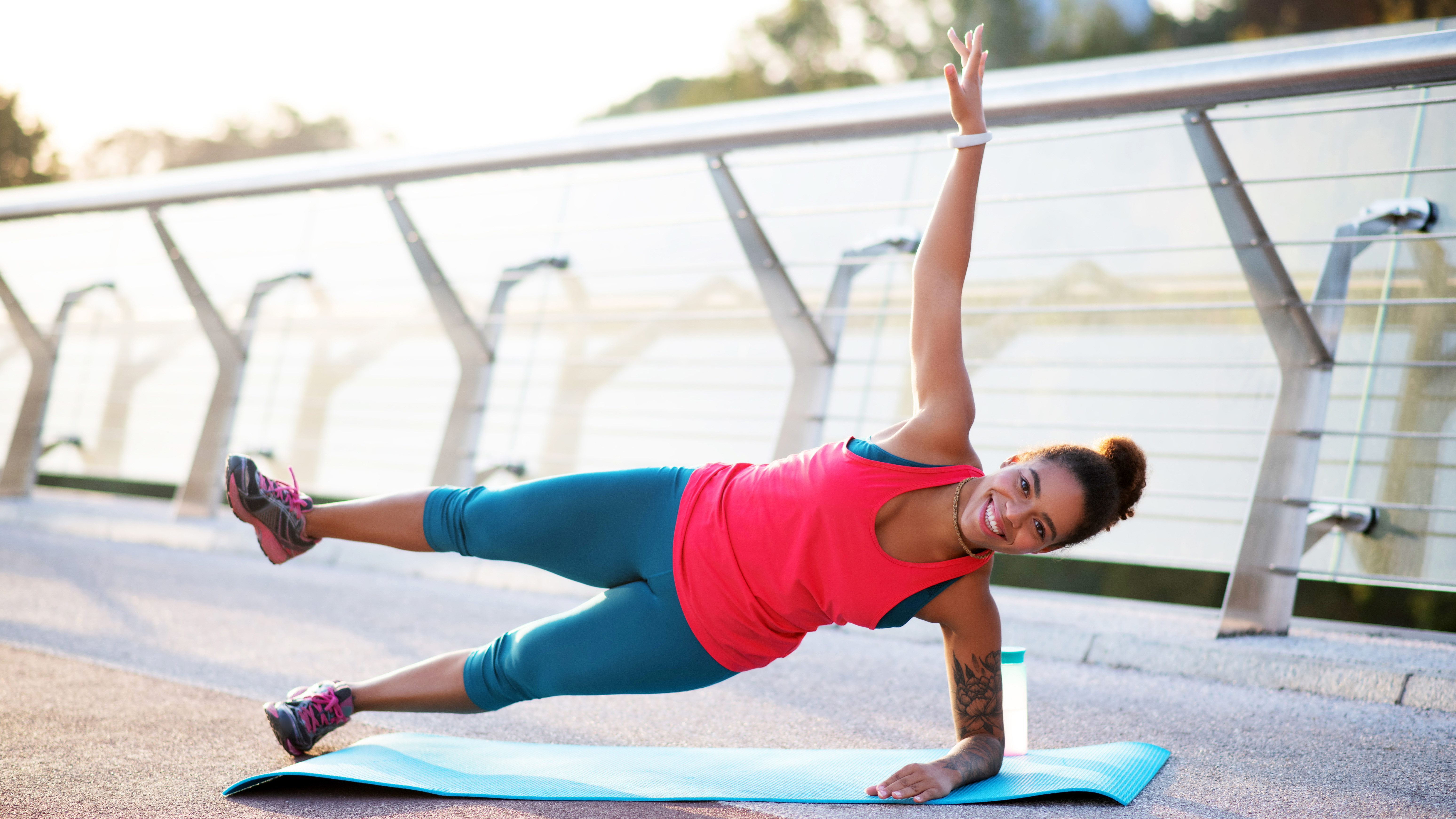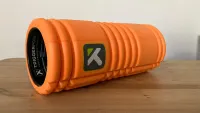My knee hurt every time I did squats until I started doing these three exercises
Try this simple routine to strengthen the lower body and support the knee

I’ve had longstanding issues with one of my knees. I’d come to accept the discomfort as an inevitable part of my life. However, when it started interfering with my workouts, I realized I needed to make a change.
The joint was painful every time I did squats and lunges, which are an essential part of my strength training regime. I went to a physical therapist who advised that I try the three exercises below. He also stressed the importance of completing these exercises multiple times a week.
I’d seen physical therapists before but hadn’t committed myself properly to the exercises they had given me. This time, I did the moves three or four times a week, usually before my gym session. I started by performing them with my body weight and gradually introduced equipment such as dumbbells and foam rollers.
The pain persisted at a similar level for around six weeks, albeit slightly minimized, but after eight weeks of doing the movements, I no longer felt pain when squatting. Since then, I rarely experience knee pain and actually enjoy movements like squats, which felt impossible eighteen months ago.
You don't need much equipment to do these exercises, just a foam roller. This is the best foam roller we've tested on Fit&Well. It's sturdy, affordable and great for massaging muscles. It's also discounted right now thanks to the Black Friday fitness sales.
Tips on knee-strengthening routines
A physical therapist can identify your problem areas and tailor your workouts to suit; for me, my glutes (muscles in the buttocks) and hamstrings (rear thigh muscles) were the weakest parts of my lower body and I also lacked knee stability. These moves are designed to specifically address these issues.
According to Susie Martin, physical therapist at Complete Pilates, it's common for knee pain to be associated with other issues in muscles and joints.
"Quite often when we see knee problems, although the location of the pain may be at the knee, there may be many contributing factors beyond the knee," she says.
Start your week with achievable workout ideas, health tips and wellbeing advice in your inbox.
"The glutes cross the hip joint and the hamstrings cross the hip and the knee joint," Martin explains. "These rear muscles form part of the posterior chain, which can often be weak compared to the quadriceps which are the front of the thighs." This weakness and muscle imbalance can be a contributing factor to knee pain.
Although these exercises were tailored to my issues, they could help plenty of people. They're good for anyone looking to build strength in the glutes, hamstrings and core, and will help with lower-body stability. However, if you're dealing with pain in your knee, it's important to seek advice from a health professional before trying any type of exercise.
The three-move routine that eradicated my knee pain
A post shared by alice porter | health & fitness writer (@aliceinwellnessland__)
A photo posted by on
1. Hamstring rollout
Reps: 6-8
- Lying on your back, bend your knees and place your feet on the floor close to the hips.
- Slide a foam roller underneath your feet, balance on your toes, and push your hips up so your body is elevated.
- Slowly slide the foam roller away from you until your legs are straight then slide it back underneath, bringing your knees back to a 90° angle.
This is far more challenging than it looks— it engages my hamstrings more than any other mat-based exercise I’ve tried. It's a great alternative to the leg extension machine in the gym.
As well as strengthening your hamstrings, this exercise will boost lower-body stability, as the glutes and hamstrings work together to keep the legs stable. One way to increase the difficulty is by attempting to do it one leg at a time but I've always found it challenging enough with both legs.
2. Side plank leg extension
Reps: 8-10 each side
- Lie on your side with your legs straight and feet stacked.
- Place your forearm on the ground and push your hips up, so your body is in a straight line. To make the move easier, you can bend the bottom knee so that it forms a 90° angle.
- Engage your core. Then slowly lift the top leg to hip level, or lower if you lack the range of motion.
I’ve found that this is one of the best glute exercises for muscle engagement. It also strengthens and stabilizes the core, which has helped me during compound exercises like squats. The slower you move, the more challenging it will be.
"Side planks are a brilliant exercise as they pretty much hit the whole body and train lateral strength which is often neglected in the gym," Martin says. "The side plank targets the lateral glutes, but not only that, the lateral core muscles, as well as the shoulder stabilizing muscles."
You might not think that your core and your knee are connected, but injury or pain in one part of the body can have a surprising impact.
"Weaknesses in one area of the body can have a knock-on effect at the other end of the body. Whole body stability exercises are important for addressing these issues," Martin explains.
3. Step down
Reps: 6-8 each side
- Stand on a raised surface, such as a bottom stair, with one foot on the elevated platform and the other hovering over the side.
- Bend at the standing knee, touch your other foot to the floor and then stand back up.
This is an exercise you can easily adapt to your fitness level. It's best to start small, beginning on a surface that's only slightly raised off the floor and increase the height over time.
"Step downs are a great functional exercise for the knee," Martin says "This move requires less strength than the other two exercises, so is suitable for most people with a knee problem, although if you struggle to stand on one leg due to pain or weakness, you may need to start with easier, non weight-bearing exercises.".
When you get more confident with this movement, you can increase the height of the surface you're standing on and add weight. I now do it standing on a 20-inch box at the gym, usually with a 17lb kettlebell.
Alice Porter is a freelance journalist covering lifestyle topics including health, fitness and wellness. She is particularly interested in women's health, strength training and fitness trends and writes for publications including Stylist Magazine, Refinery29, The Independent and Glamour Magazine. Like many other people, Alice's personal interest in combining HIIT training with strength work quickly turned into a CrossFit obsession and she trains at a box in south London. When she's not throwing weights around or attempting handstand push-ups, you can probably find her on long walks in nature, buried in a book or hopping on a flight to just about anywhere it will take her.



